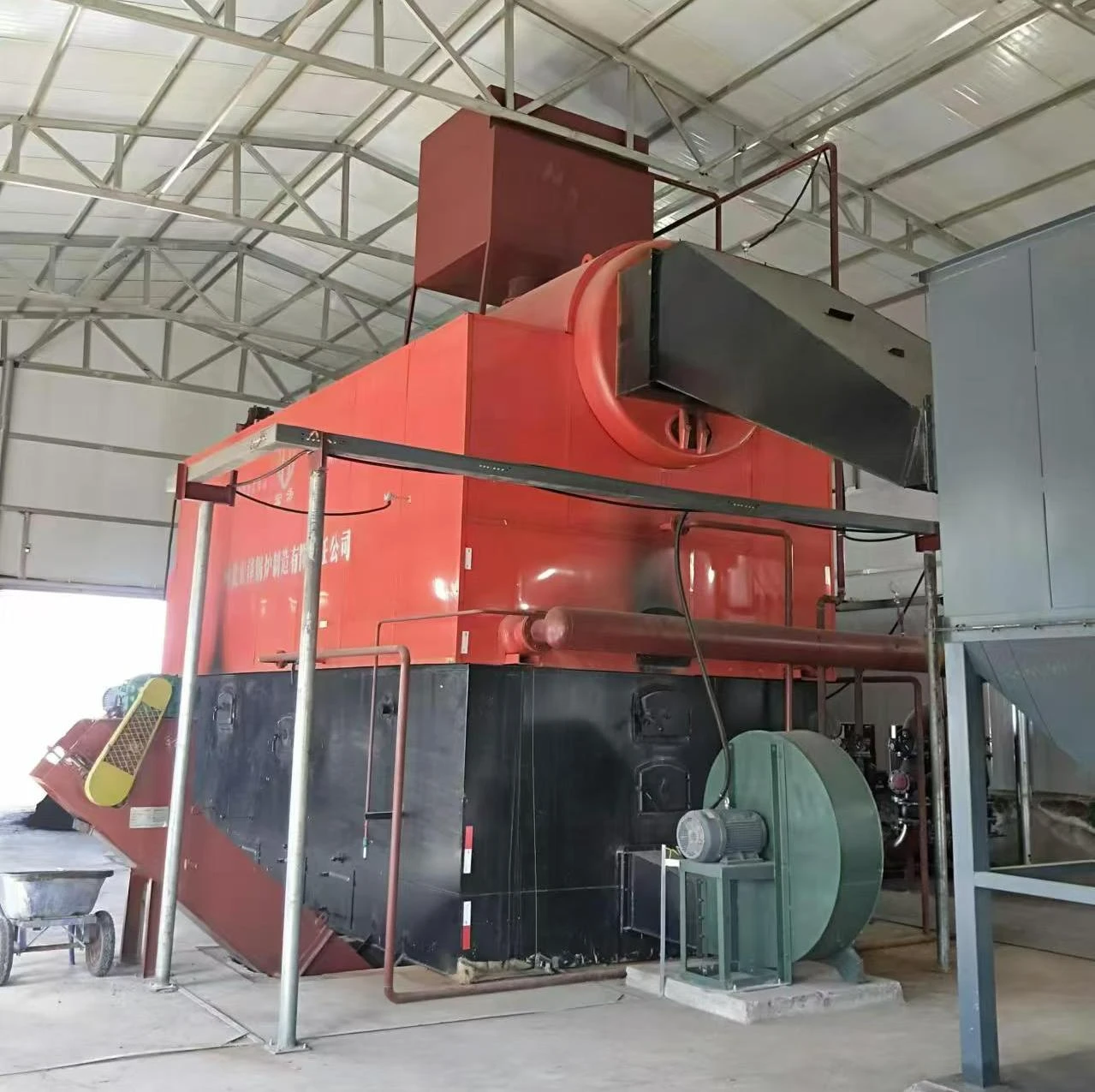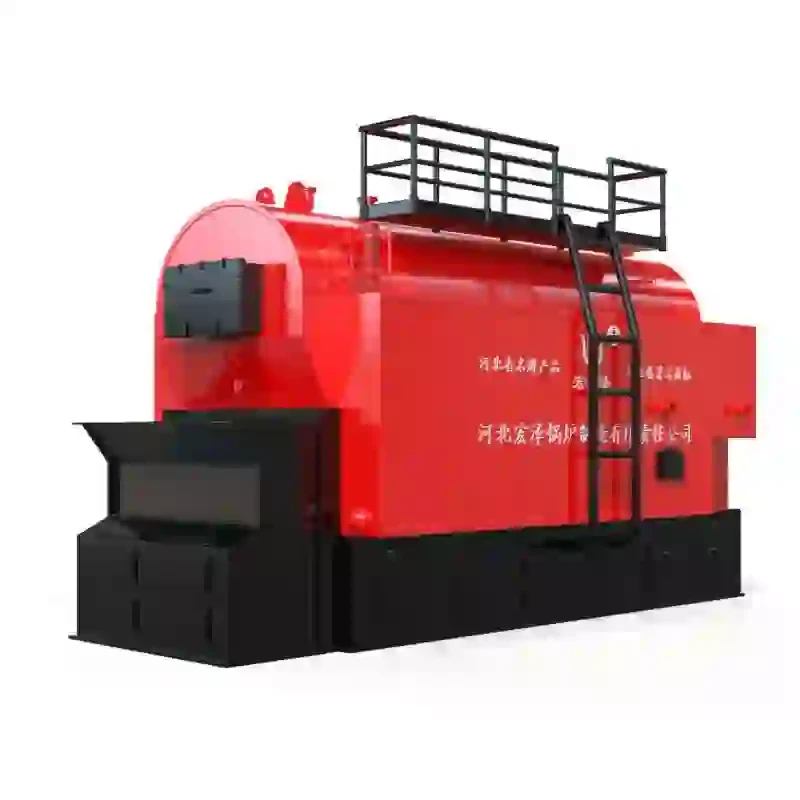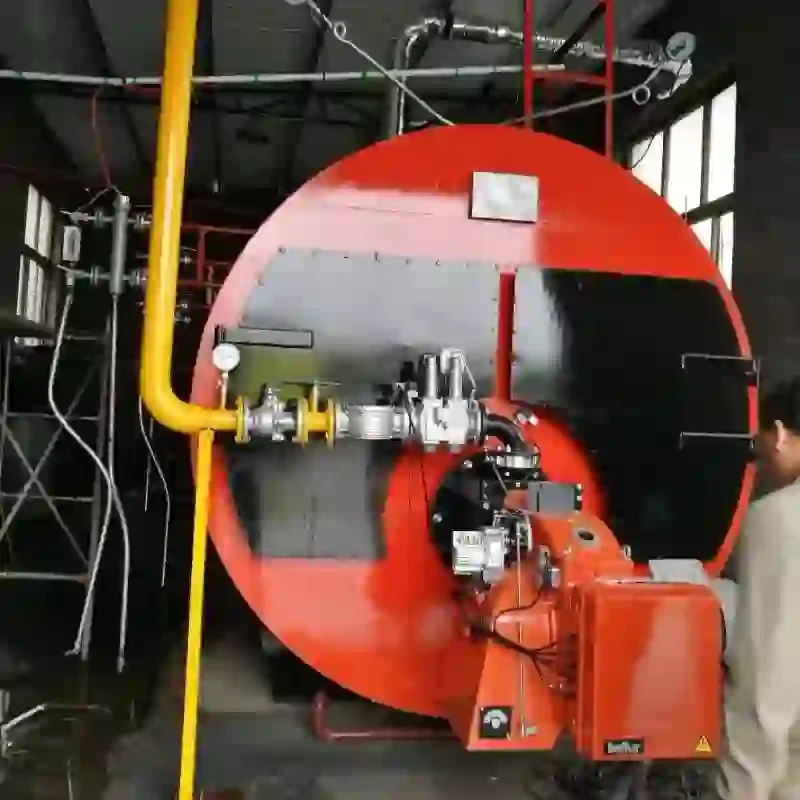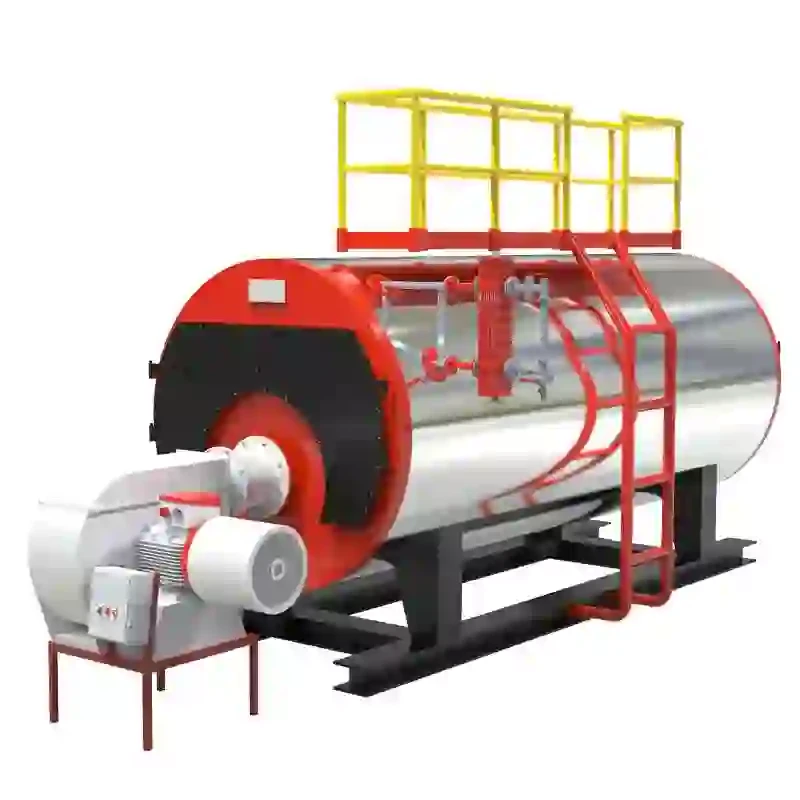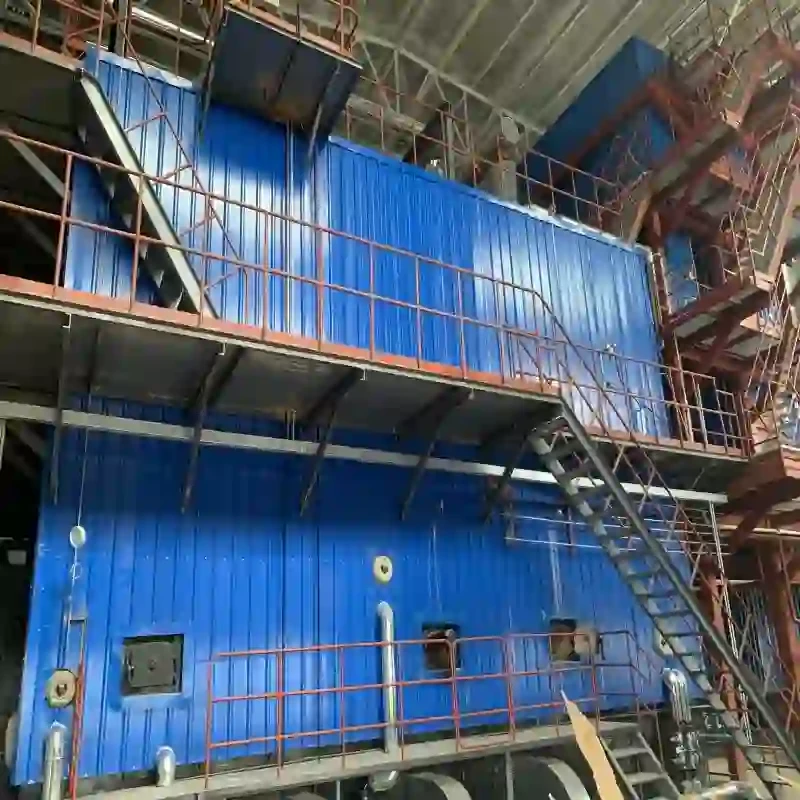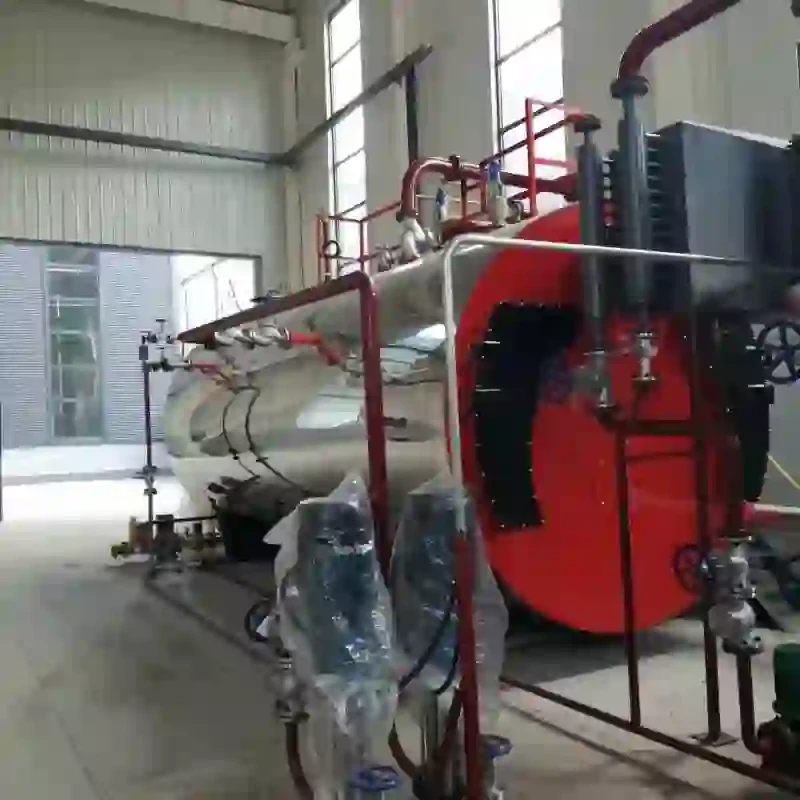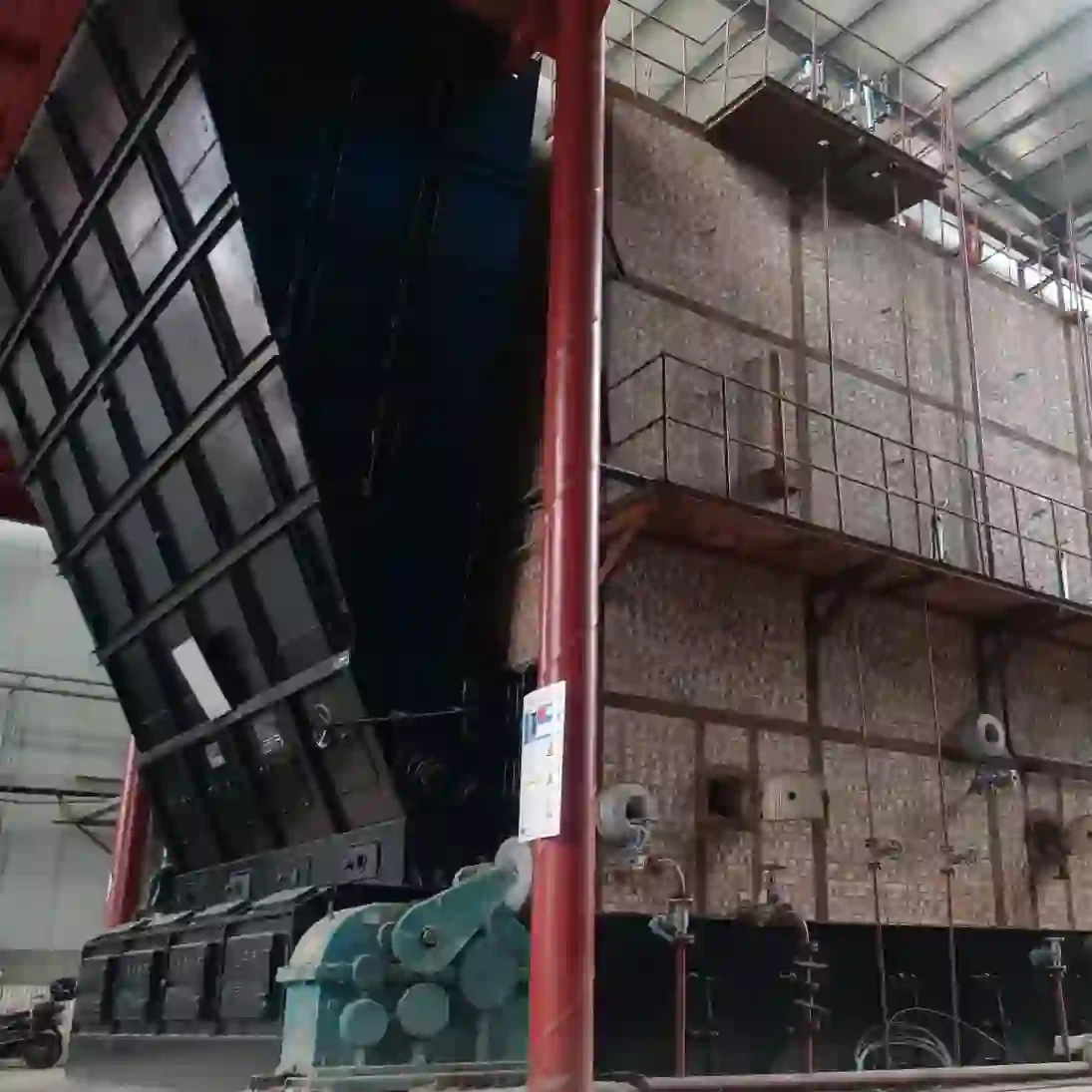
Aug . 31, 2025 03:20 Back to list
Efficient Types of Coal Fired Steam Boiler Solutions
Navigating the Landscape of Industrial Coal-Fired Steam Boilers
In industrial operations, reliable and efficient steam generation remains a critical backbone for countless processes. Among the various thermal energy solutions, the types of coal fired steam boiler continue to play a significant role, particularly in regions with abundant coal resources and specific energy requirements. This comprehensive overview delves into the intricate world of coal-fired boiler technology, providing B2B decision-makers and technical engineers with essential insights into their design, functionality, and strategic deployment. Understanding the nuances of these systems is crucial for optimizing operational efficiency, ensuring compliance with environmental standards, and making informed investment decisions in a rapidly evolving energy landscape.
Current Industry Trends and Market Dynamics
The global market for coal fired steam boiler systems is undergoing significant transformation, driven by a confluence of factors including evolving environmental regulations, advancements in combustion technology, and fluctuating energy prices. While there's a global push towards cleaner energy sources, coal remains a primary fuel for industrial steam generation in many sectors due to its cost-effectiveness and availability. Modern advancements focus heavily on increasing efficiency, reducing emissions, and extending the operational lifespan of these critical assets. For instance, the adoption of circulating fluidized bed (CFB) technology and pulverized coal (PC) combustion with advanced emission controls has become standard for new installations, significantly mitigating the environmental impact compared to older designs. According to recent market analyses, the demand for high-capacity industrial boilers, especially those incorporating advanced heat recovery and emission reduction systems, is projected to remain stable, particularly in heavy industries such as petrochemicals, metallurgy, and power generation where continuous, high-pressure steam is indispensable.
The emphasis on energy efficiency is paramount. Manufacturers are integrating intelligent control systems, sophisticated heat exchangers, and optimized boiler designs that achieve thermal efficiencies exceeding 90%. This not only reduces fuel consumption but also aligns with corporate sustainability goals. Furthermore, the market for retrofitting existing coal-fired boilers with advanced control systems and emission reduction technologies is also experiencing growth, reflecting an industry-wide commitment to compliance and performance enhancement.
Understanding the Types of Coal Fired Steam Boiler and Their Technical Specifications
Categorization of types of coal fired steam boiler primarily depends on their construction, operating pressure, and combustion method. The two most common designs are fire-tube boilers and water-tube boilers, with the latter being more prevalent in high-capacity industrial applications due to their superior efficiency and ability to handle higher pressures.
- Fire-Tube Boilers: In this design, hot combustion gases pass through tubes surrounded by water. They are typically used for lower pressure and smaller steam capacities (up to 20 tons/hour and 1.25 MPa). Advantages include simple construction, lower initial cost, and ease of maintenance. However, their limited pressure and capacity make them less suitable for large industrial processes.
- Water-Tube Boilers: Here, water circulates through tubes heated externally by combustion gases. These boilers are preferred for high-pressure, high-temperature, and large-capacity steam generation (up to 400 tons/hour and 10 MPa or more). Their rapid steam generation, excellent heat transfer efficiency, and ability to handle high pressures make them ideal for power generation and heavy industrial applications. The design allows for larger heating surfaces and safer operation under strenuous conditions, distinguishing them significantly among the types of coal fired steam boiler.
- Fluidized Bed Boilers (FBB): This advanced type, often a variation of water-tube boilers, uses a bed of inert particles (like sand or ash) suspended by an upward flow of air. Coal is introduced into this fluidized bed, resulting in highly efficient combustion at lower temperatures, which significantly reduces NOx emissions and allows for the capture of SOx by adding limestone. FBBs are particularly effective for burning low-grade coals and a variety of other fuels.
Key Technical Parameters
When selecting a coal fired steam boiler, several technical parameters are critical. These include steam capacity, working pressure, steam temperature, thermal efficiency, fuel consumption, and emission levels. Below is a representative table of specifications for modern industrial coal fired water tube boiler systems, showcasing the high performance and compliance expected in today's market.
| Parameter | Range/Value | Units | Notes |
|---|---|---|---|
| Steam Capacity | 10 - 400 | t/h (tons per hour) | Dependent on application scale |
| Working Pressure | 1.25 - 10.0 | MPa (Megapascals) | Up to 15.0 MPa for specific needs |
| Steam Temperature | 194 - 540 | °C | Saturated to Superheated |
| Thermal Efficiency | 88 - 92 | % | Higher with economizers/air preheaters |
| Fuel Consumption (approx.) | 100 - 30,000 | kg/h | Varies based on capacity & coal calorific value |
| NOx Emissions | ≤ 200 - 400 | mg/Nm³ | Lower with FBB/SCR systems |
| SOx Emissions | ≤ 50 - 200 | mg/Nm³ | Lower with desulfurization systems |
| Dust Emissions | ≤ 30 - 50 | mg/Nm³ | With ESP/Baghouse filters |

Detailed Manufacturing Process Flow for High-Performance Steam Boilers
The robust performance and longevity of advanced types of coal fired steam boiler are a direct result of meticulous manufacturing processes, stringent material selection, and rigorous quality control. Our manufacturing philosophy adheres to global best practices, ensuring each boiler meets and often exceeds international standards.
Materials and Initial Fabrication
- Material Procurement: High-quality, certified boiler-grade steel (e.g., SA-106 Gr. B, SA-210 Gr. A1 for seamless tubes; SA-516 Gr. 70 for pressure vessels) is sourced from reputable suppliers. All incoming materials undergo thorough chemical composition and mechanical property testing to ensure compliance with ASME, ASTM, and EN standards. This initial screening is critical for the overall integrity and safety of the pressure parts.
- Tube Bending and Forming: Precision CNC tube bending machines are employed to form boiler tubes, water walls, and superheater coils. This ensures accurate geometries and minimizes stress points. Cold working processes are often followed by stress-relieving heat treatments to restore material properties and enhance fatigue resistance.
- Drum and Header Manufacturing: Boiler drums and headers are fabricated using advanced forging and rolling techniques. Large plates are rolled into cylindrical shells, and seams are welded using automated submerged arc welding (SAW) or shielded metal arc welding (SMAW) processes. Forged headers undergo precise machining for nozzle and tube stub connections.
Assembly and Welding
- Panel Welding: Water wall panels, critical for containing combustion and transferring heat, are assembled by welding individual tubes to form membrane walls using automatic welding machines, ensuring consistent weld quality and structural integrity.
- Module Assembly: Major components like furnace sections, convection banks, and economizers are assembled into modules. This modular approach streamlines on-site installation and maintains factory-level quality control. Robotic welding is increasingly used for repetitive tasks, enhancing speed and precision.
Quality Control and Testing Standards
Quality assurance is embedded at every stage. All welds are subjected to non-destructive testing (NDT), including X-ray radiography, ultrasonic testing (UT), magnetic particle inspection (MPI), and dye penetrant inspection (DPI) in accordance with ISO 3834 and ASME Boiler and Pressure Vessel Code (BPVC) Section V.
Step 1: Raw Material Inspection
Chemical & mechanical tests (ISO, ASTM)
Step 2: Component Fabrication
CNC Bending, Forging, Rolling, Machining
Step 3: Welding & Assembly
Automated welding, Module construction
Step 4: Hydrostatic Testing
Pressure integrity test (ASME BPVC)
Step 5: Final Inspection & Certification
NDT, Documentation, Third-party verification
A hydrostatic test is performed on all pressure parts to ensure integrity at working pressures well above design limits, conforming to ASME BPVC Section I. The typical service life of a well-maintained industrial coal fired steam boiler is 20-30 years, often extending beyond with proper maintenance and component upgrades.

Application Scenarios and Technical Advantages
The versatility of different types of coal fired steam boiler makes them indispensable across a broad spectrum of heavy industries. Their ability to deliver high-pressure, high-temperature steam reliably and continuously is crucial for operations where energy demands are substantial and uninterrupted supply is paramount.
Target Industries:
- Petrochemical Industry: Steam is used extensively for process heating, distillation, stripping, and power generation within refineries and chemical plants. High-pressure steam drives turbines for electricity generation, while lower pressure steam is used for reactor heating and heat exchange. The robust nature of coal fired steam boiler systems suits the demanding environments and continuous operation required.
- Metallurgy and Steel Mills: In steel production, steam is essential for various processes, including coke oven heating, preheating of furnaces, and descaling. It also plays a role in waste heat recovery systems, contributing to overall energy efficiency.
- Pulp & Paper Manufacturing: Steam is critical for drying paper, heating digesters in the pulping process, and generating electricity for mill operations. The high energy demand makes coal-fired solutions economically viable.
- Textile Industry: Dyeing, finishing, and steaming processes in textile manufacturing heavily rely on consistent steam supply.
- Food and Beverage Industry: Sterilization, cooking, drying, and pasteurization all require process steam, albeit often at lower pressures than heavy industry.
- Water Supply & Drainage Systems: Though less direct, steam can be used for power generation to run pumps or for heating processes in water treatment facilities, particularly in colder climates.
Key Technical Advantages:
- Energy Saving: Modern coal fired steam boiler designs incorporate advanced heat recovery units such as economizers and air preheaters, which capture waste heat from flue gases to preheat boiler feed water and combustion air, respectively. This significantly boosts thermal efficiency, often achieving levels above 90%, thereby reducing coal consumption and operational costs.
- Corrosion Resistance: Critical components, especially tubes and pressure parts, are fabricated from high-grade alloy steels designed to resist high-temperature oxidation and corrosion, ensuring long-term operational integrity. Advanced surface treatments and material selection based on operating conditions (e.g., acid dew point corrosion in economizers) mitigate degradation.
- Robust Design for Heavy-Duty Operation: These boilers are engineered for continuous, heavy-duty industrial service, capable of handling fluctuating loads and maintaining stable steam output. The sturdy construction and choice of materials contribute to exceptional durability.
- Fuel Flexibility (Advanced Systems): While primarily designed for coal, modern FBB types of coal fired steam boiler can handle a wide range of low-grade coals, biomass, and other opportunity fuels, offering operational flexibility and potential cost savings.
- Environmental Compliance: Equipped with sophisticated flue gas treatment systems (e.g., electrostatic precipitators, baghouse filters for particulates; Selective Catalytic Reduction (SCR) or Selective Non-Catalytic Reduction (SNCR) for NOx; Flue Gas Desulfurization (FGD) for SOx), these boilers meet increasingly strict national and international emission standards.

Vendor Comparison and Customized Solutions
Choosing the right coal fired steam boiler manufacturers is a critical decision that impacts long-term operational efficiency, maintenance costs, and regulatory compliance. The market offers a variety of suppliers, each with unique strengths in technology, experience, and service.
Key Considerations for Vendor Selection:
- Technological Prowess: Assess the manufacturer's innovation in combustion technology (e.g., FBB vs. PC), emission controls, and automation.
- Manufacturing Quality and Certifications: Verify adherence to international standards like ASME, ISO, CE, and local certifications relevant to your region.
- After-Sales Support and Service Network: The availability of spare parts, technical support, and experienced service engineers is paramount for minimizing downtime.
- Customization Capabilities: Can the manufacturer tailor the boiler to your specific fuel characteristics, steam requirements, and site constraints?
- Track Record and References: Review past projects and client testimonials, especially in your target industry.
Comparative Analysis of Boiler Types and Vendors (Illustrative):
| Feature | Standard Water-Tube Boiler (Pulverized Coal) | Circulating Fluidized Bed (CFB) Boiler |
|---|---|---|
| Fuel Flexibility | Typically optimized for specific coal grades; less flexible with low-grade fuels. | High flexibility, can burn diverse fuels (low-grade coal, biomass, waste). |
| Combustion Temperature | High (1300-1600°C), leading to higher NOx formation. | Lower (850-950°C), inherently reduces NOx. |
| SOx Emissions Control | Requires external Flue Gas Desulfurization (FGD) systems. | In-situ desulfurization by adding limestone to the bed. |
| NOx Emissions Control | Requires post-combustion (SCR/SNCR) or low-NOx burners. | Low intrinsic NOx due to lower combustion temperature. |
| Ash Management | Higher potential for slagging and fouling due to high temperatures. | Reduced slagging; ash can be utilized as construction material. |
| Capital Cost | Potentially lower initial boiler cost, but higher for complete emission control. | Generally higher initial boiler cost, but reduced auxiliary emission control costs. |
| Operating Complexity | Relatively simpler operation for specific fuel. | More complex control system for bed dynamics. |
Customized Solutions: Tailoring Boiler Systems to Specific Needs
Recognizing that every industrial application has unique requirements, leading coal fired steam boiler manufacturers offer extensive customization options. This includes, but is not limited to:
- Fuel Analysis and Optimization: Designing the combustion system (grate type, furnace volume, burner arrangement) to perfectly match the characteristics of the specific coal available, including calorific value, ash content, and volatile matter.
- Steam Parameter Adjustment: Modifying boiler design to achieve precise steam capacity, pressure, and temperature specifications (e.g., saturated, superheated, or reheat steam cycles) required for specific processes or power generation.
- Space and Layout Constraints: Adapting boiler dimensions and auxiliary equipment arrangements to fit challenging industrial footprints or existing plant layouts.
- Emission Control Integration: Customizing the flue gas treatment system based on local environmental regulations and desired emission targets, integrating technologies like bag filters, ESPs, SCR/SNCR, and FGD units.
- Automation and Control Systems: Implementing advanced Distributed Control Systems (DCS) or PLC-based solutions with human-machine interfaces (HMIs) tailored for specific operational complexities and integration with plant-wide systems.

Application Case Studies and Customer Experience
Real-world applications demonstrate the tangible benefits and reliability of modern types of coal fired steam boiler. These case studies highlight efficiency gains, operational stability, and environmental compliance achieved by industrial clients.
Case Study 1: Large-Scale Petrochemical Complex
A major petrochemical producer in Southeast Asia required a high-capacity steam source for their expanded processing units. They opted for two 75 t/h coal fired water tube boiler units, designed for pulverized coal combustion.
- Challenge: Meet a continuous demand of 150 t/h of superheated steam (4.5 MPa, 450°C) while adhering to stringent local emission regulations for NOx, SOx, and particulates.
- Solution: The boilers were custom-designed with advanced low-NOx burners, a Selective Catalytic Reduction (SCR) system for NOx reduction, and a combined electrostatic precipitator (ESP) and wet flue gas desulfurization (WFGD) system. Integrated economizers and air preheaters were included for maximum heat recovery.
- Outcome: The system achieved a thermal efficiency of 91.5%, exceeding the design target of 90%. Emissions were consistently below regulated limits (NOx < 150 mg/Nm³, SOx < 80 mg/Nm³, dust < 20 mg/Nm³). The client reported significant savings in operating costs due to optimized fuel consumption and minimal downtime, attributing the success to robust engineering and comprehensive after-sales support.
Case Study 2: Regional Textile Manufacturer Upgrade
A textile company sought to replace its aging fleet of boilers with more efficient and environmentally friendly units, focusing on reducing their coal fired steam boiler price per ton of steam generated.
- Challenge: Upgrade from older stoker-fired boilers to modern units that could utilize local, lower-cost lignite coal while drastically cutting emissions and improving steam quality for delicate textile processes.
- Solution: Two 20 t/h Circulating Fluidized Bed (CFB) boilers were installed. These boilers were specifically designed to handle the variable characteristics of lignite coal and incorporate in-situ desulfurization with limestone injection, coupled with baghouse filters for particulate control.
- Outcome: The CFB boilers provided a consistent supply of saturated steam (2.5 MPa, 220°C) with a thermal efficiency of 89%. The ability to use cheaper lignite significantly reduced fuel costs by 25%. Emission levels for SOx and dust were reduced by over 90% compared to the previous boilers, demonstrating superior environmental performance and providing a strong competitive advantage in the local market. Customer feedback highlighted the enhanced process control and reduced maintenance requirements.

Authoritativeness and Trustworthiness: Our Commitment
Building trust and demonstrating authoritative expertise are fundamental to our approach as a leading provider of various types of coal fired steam boiler. We ensure this through rigorous certifications, transparent practices, and unwavering customer support.
Certifications and Compliance:
Our manufacturing facilities and boiler systems adhere to the highest international and national standards, including:
- ASME Boiler and Pressure Vessel Code (BPVC): Our boilers are designed and manufactured in compliance with ASME Section I (Power Boilers) and Section VIII (Pressure Vessels), ensuring the highest safety and quality standards for pressure-retaining components.
- ISO 9001:2015: Certified for Quality Management Systems, demonstrating our commitment to consistent product quality and customer satisfaction across all processes.
- ISO 14001:2015: Certified for Environmental Management Systems, affirming our dedication to minimizing environmental impact throughout manufacturing and product lifecycle.
- CE Marking: For products destined for the European market, indicating compliance with relevant EU directives (e.g., Pressure Equipment Directive 2014/68/EU).
- National Boiler Manufacturing Licenses: Holding all necessary domestic licenses and permits for the design, manufacture, and installation of boilers and pressure vessels.
Trustworthiness through Transparency:
- FAQ Module:
- Q: What is the typical lead time for a custom coal fired steam boiler?
A: Lead times typically range from 4 to 12 months, depending on the boiler's complexity, capacity, and customization requirements. This includes design, fabrication, testing, and shipping. We provide a detailed project schedule upon order confirmation. - Q: What warranty coverage do you offer?
A: We offer a standard 12-month warranty from commissioning or 18 months from shipment (whichever comes first) on all major boiler components, covering manufacturing defects. Extended warranty options are available. - Q: What kind of after-sales support is provided?
A: Our comprehensive after-sales support includes installation supervision, commissioning services, operator training, remote technical assistance, and a global network of service engineers for on-site support and spare parts supply. We offer maintenance contracts to ensure optimal long-term performance. - Q: How does your company ensure environmental compliance?
A: We integrate state-of-the-art emission control technologies tailored to specific project requirements and local regulations. Our engineering team actively stays abreast of evolving environmental standards to ensure our boiler solutions are future-proof.
- Q: What is the typical lead time for a custom coal fired steam boiler?
- Lead Time and Fulfillment: Our project management team meticulously plans each stage from design to delivery, providing clear communication and transparent timelines. We leverage modular design and fabrication to optimize lead times while maintaining quality.
- Customer Support: Our dedicated customer support team and network of regional service centers ensure prompt response to inquiries, technical issues, and spare part requirements, minimizing operational disruptions for our clients.

Conclusion: The Enduring Role of Advanced Coal-Fired Steam Boilers
The landscape of industrial energy generation is dynamic, yet the fundamental need for reliable, efficient, and cost-effective steam remains constant. While alternative energy sources continue to grow, modern types of coal fired steam boiler, especially those incorporating advanced combustion and emission control technologies, offer a compelling solution for industries with high energy demands and access to coal resources. The technical advantages, ranging from high thermal efficiency and robust construction to advanced environmental compliance mechanisms, underscore their continued relevance.
For B2B decision-makers and engineers, selecting the appropriate coal fired steam boiler involves a meticulous evaluation of technical specifications, operational costs, environmental regulations, and the long-term support offered by manufacturers. By partnering with experienced and certified coal fired steam boiler manufacturers who prioritize quality, customization, and after-sales service, industries can secure a vital component of their operations that is both economically sound and environmentally responsible. The journey towards sustainable industrial production is complex, and for many sectors, advanced coal-fired steam boilers will continue to play a crucial, efficient, and compliant role.
References
- American Society of Mechanical Engineers (ASME). Boiler and Pressure Vessel Code. Section I: Rules for Construction of Power Boilers.
- International Organization for Standardization (ISO). ISO 9001:2015 Quality management systems — Requirements.
- International Organization for Standardization (ISO). ISO 14001:2015 Environmental management systems — Requirements with guidance for use.
- European Committee for Standardization (CEN). Pressure Equipment Directive 2014/68/EU.
- Babcock & Wilcox. Steam: Its Generation and Use. 42nd Edition.
- Energy Information Administration (EIA). International Energy Outlook.
- International Energy Agency (IEA). Coal 2023 Report.
-
Comprehensive Guide to Steam Boiler Installation Diagram – Global Best Practices and Future Trends
NewsNov.24,2025
-
A Practical Guide to the Selection of Steam Boiler for Industrial Efficiency
NewsNov.23,2025
-
Comprehensive Guide to Steam Boiler PDF Manuals and Their Global Impact
NewsNov.22,2025
-
Discover How Steam Boiler Videos Improve Industrial Training & Safety
NewsNov.22,2025
-
Comprehensive Guide to Wood Fired Steam Boiler Design – Efficiency, Applications, and Innovations
NewsNov.21,2025
-
Comprehensive Guide to Steam Boiler Working – Efficiency & Applications
NewsNov.20,2025
Related PRODUCTS






